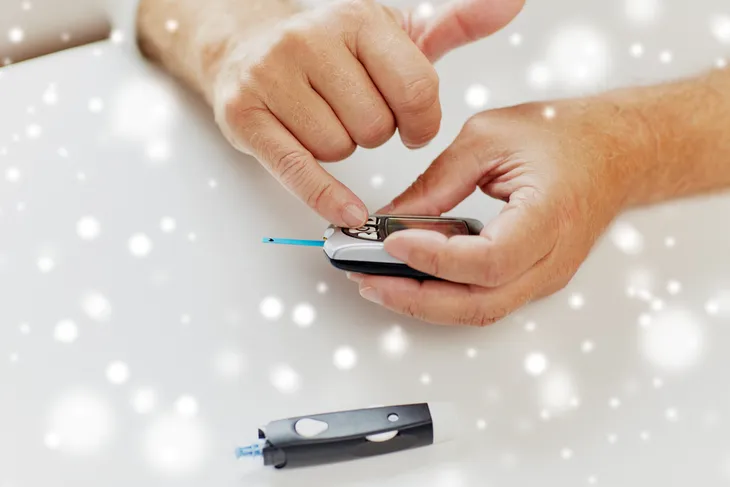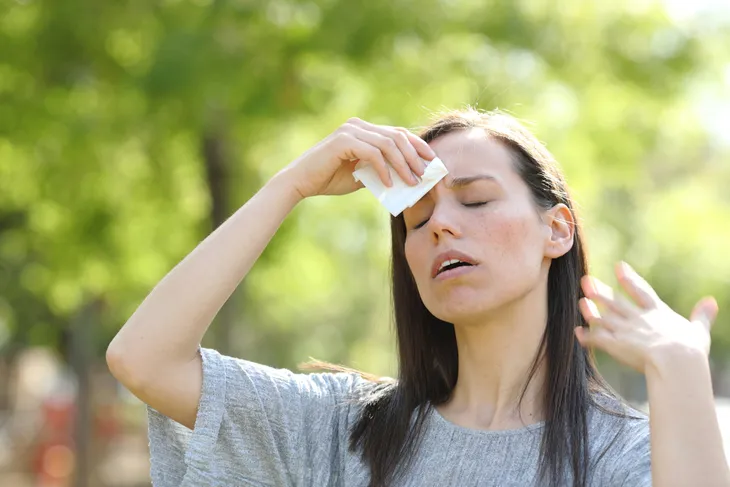When I was first diagnosed with type 1 diabetes, I wasn’t told how each season would impact this disease. I was told about how medication can go “bad” in high temperatures but that was pretty much the extent of it. Now that I’ve lived with the illness for over 10 years, I am well aware of the patterns and changes my body goes through when the temperature fluctuates. Being in the “know” has helped me enjoy the seasons much more.
Each season presents different kinds of challenges to become accustomed to. While every person living with type 1 diabetes has their own unique lifestyle and health choices, there are a couple of key elements to be aware of as the seasons change that impact all people with diabetes.
Want diabetes content delivered straight to your inbox? Sign up for our Diabetes newsletter and receive exclusive news and articles written from our team of diabetes experts.
Transitional Seasons (Fall/Spring)
These seasons are among the most enjoyable, but the worst when it comes to diabetes management. While the more moderate temperatures mean diabetes gear will function at a normal, uncompromised level, the unpredictable temperatures during these seasons can make it hard to keep a consistent exercise routine.
As well as finding it hard to maintain a consistent exercise schedule, sleep and meal times may change as well due to the longer/shorter days. All of which will affect blood glucose levels.
So, while basal rates (normal background medication dose) may not have to be changed or considered too much during these seasons, routine and making sure your life has some sort of consistency is key to enjoying them.
- Make sure you have an outdoor and indoor exercise routine so if the weather is too cold or rainy, you don’t have to skip out on your movement.
- Try and keep mealtimes within a 1-2 hour bracket each day.
- When enjoying a social outdoor activity, make sure to keep an eye on blood glucose levels and bring extra glucose tabs and snacks.
- Do your best to keep a consistent sleep schedule, wear and eye mask, earplugs and use white noise if needed.
Cold Season (Winter)
Colder temperatures can put a lot of stress on the body. As a result of this added stress and the body doing more work to keep itself warm, blood sugar levels tend to be higher than normal.
Not only will the body be doing more work on a base physiological level, the shorter days and cooler weather will discourage many from being active outside. This naturally will lead to less activity in general, which again, will cause glucose levels to rise.
In extreme cold temperatures, insulin pumps, glucose meters and CGMs/FGMs can freeze and malfunction, which can be dangerous and lead to high glucose levels and/or complications.
Winter undoubtedly means higher blood sugar levels for most of those living with type 1 diabetes, which can be tackled in a number of ways.
- Track blood glucose levels consistently to pick up on patterns.
- Talk to your doctor about changing your basal rates and medication needs during the winter months.
- Make sure you are still exercising and have some sort of routine in place at home.
- Keep yourself warm and bundled, especially make sure your feet are dry and warm.
- Drink warm liquids, staying hydrated is important when daily life is less mobile.
Hot Season (Summer)
Typically the summer months mean more activity and lower glucose levels. The sun invites us to spend more time outside and our bodies are overall in less stress than in the colder months. One of the biggest challenges to keeping our blood glucose stable is making sure we are hydrated enough. Dehydration can seriously cause blood glucose levels to swing all over the place and it’s an easy thing to overlook.
Also being extra aware of low glucose episodes is important. Increased activity can lead to more lows, so it’s good to be aware of your body when entering the hotter months.
On the other hand, high temperatures can spoil medication and decrease its effectivity, which will cause higher glucose levels.
Some reminders to keeping glucose smooth during the summer months:
- Keep track of low glucose episodes.
- Talk to your doctor about dosage adjustments if you notice something is off.
- Make sure your medication is out of direct sunlight and bring a cooler pack if you need it.
- Stay hydrated and carry a water bottle with you.
- Carry extra low glucose snacks and consider increasing fat and protein intake in meals.
- Make sure your skin is protected and be weary of scraps and cuts. Skin sores can take longer to heal when living with T1D.
There are so many things to be aware of when living with type 1 diabetes. Something like the weather can feel like an afterthought. But it’s important to be aware of it in the back of your mind for problem-solving inexplicable high or low blood sugars levels. Hot, cold or fluctuating temperature could be the reason your type 1 diabetes is acting up.






